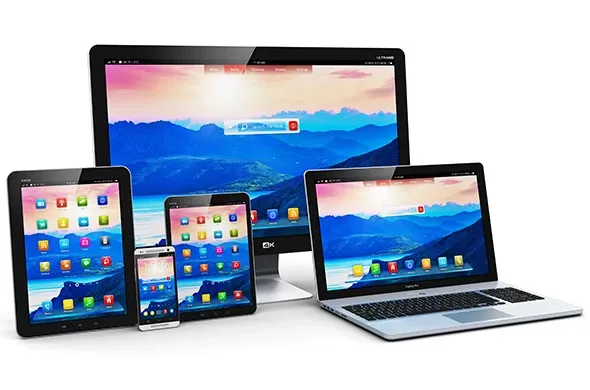Business Users and Developers Are the Main Opportunities for AI PCs
AI is coming to the PC, but Apple and NVIDIA already have a lock on creative and gaming users, says a new Omdia report.

The Europe, Middle East, and Africa (EMEA) traditional PC market (desktops, notebooks and workstations) continued to improve in the second quarter of 2017, with a stable performance of -0.6%. A total of 15.9 million units were shipped, according to IDC.
Notebooks performed positively across EMEA (+3.1%) with a strong growth in CEE (+5.2%) and MEA (+11.1%) and showing a further stabilization in Western Europe (+0.4%). The investments in public and private sectors in CEMA along with stronger economic confidence in major mature markets and back-to-school deals also fueled commercial notebooks, which grew 18.6% in CEMA and 3.0% in Western Europe. Consumer notebook shipments increased 3.5% in CEMA but showed a decrease of 2.0% in Western Europe.
Overall desktop shipments continued to decline, posting an -8.3% decrease in EMEA. However, they returned to positive growth in CEE (+7.8%) after years of contraction, showing a strong performance in both consumer and commercial segments (+8.9% and +6.8%, respectively). Furthermore, the overall traditional PC market in CEE posted +6.1 growth 2017Q2, which, as the second quarter of growth, qualified as a recovery.
In Western Europe, the traditional PC is displaying a soft decline (-2.1%) after two quarters of growth. Desktop continued to erode, with a decrease of 7.8%, while notebooks achieved soft growth. Southern Europe was above expectations, with YoY growth in most countries: France (1.9%), Spain (11.6%), and Portugal (16.7%). Benelux was also outperforming at +5.8% thanks to back to school. In contrast, Germany and the U.K. contracted as expected, with Brexit uncertainties leading to negative growth (-11.8%) YoY for the U.K.
In the commercial space, traditional PC shipments declined -1.3% YoY. While commercial desktops further eroded, notebooks displayed growth of 3.0% YoY and stabilized overall commercial shipment growth. Portable volumes were supported by large and very large enterprise renewals as mobility adoption combined with Windows 10 was strong. In consumer, desktop continued its decline (-6.6% YoY), while notebook managed a soft decrease of 2.0% YoY, driven by increasing demand for gaming notebooks and thin and light solutions.
"In the CEE region, the PC market reported 'astonishing' growth in the desktop space, resulting in an increase of 7.6%, after more than nine long quarters of market decline. This success can be attributed to promotions in retail, continual growth of gaming, and a few large deals that took place the public and corporate segments. The traditional notebook reported 5.2% growth YoY, and the commercial traditional notebook posted a YoY increase of 10.8%, thanks to large tenders in the education sector in Georgia,“ said Nikolina Jurisic, Product Manager, IDC CEMA.
“The MEA traditional PC market, on the contrary, continues to experience YoY decline of 2.3%, but showing some stabilization. The notebook market reported strong growth of 11.2% YoY, in line with expectations, thanks to education deals in the region. The desktop market remains contracted, with a strong double digit decline affected by lack of demand in the consumer space,“ said Jurisic.
Traditional PC market consolidation is progressing, and the share of the top 3 vendors continued to grow in 2017Q2. The top 3 players accounted for 59.3% of the total market volume, with 56.7% in 2016Q2. HP held onto the top spot, with 26.5% market share (up 1% YoY) and a growth rate of 3.2% YoY. Solid notebook results, in both the consumer and commercial markets, combined with stronger consumer desktops, boosted performance. Lenovo ranked second, recording a market share of 20.6% (up 1.1% YoY) and growing at 4.8% YoY, led by the double-digit growth of commercial notebooks.
Dell gained 0.5% market share YoY to reach 12.2%, with a solid growth rate of 3.9% YoY. The strong performance in commercial notebook primarily contributed to the healthy results. ASUS, despite securing fourth position with 10% market share, continued its struggle to return to positive growth territory (especially in CEE and WE), posting a YoY decline of -14.6%. Acer maintained its growth trajectory for the third quarter in a row (2.9% YoY), strengthening its position (9.2% share) thanks to back to school shipments.
Top 5 VendorsEMEA Traditional PC Shipments 2017Q2 (Preliminary) (000 Units)
Vendor | 2016Q2 Shipments | 2017Q2 Shipments | 2016Q2 Share | 2017Q2 Share | YoY Growth |
HP | 4,086 | 4,219 | 25.5% | 26.5% | 3.2% |
Lenovo | 3,128 | 3,280 | 19.5% | 20.6% | 4.8% |
Dell | 1,869 | 1,943 | 11.7% | 12.2% | 3.9% |
ASUS | 1,870 | 1,598 | 11.7% | 10.0% | -14.6% |
Acer | 1,429 | 1,470 | 8.9% | 9.2% | 2.9% |
Others | 3,642 | 3,400 | 22.7% | 21.4% | -6.3% |
Total | 16,012 | 15,910 | 100.0% | 100.0% | -0.6% |